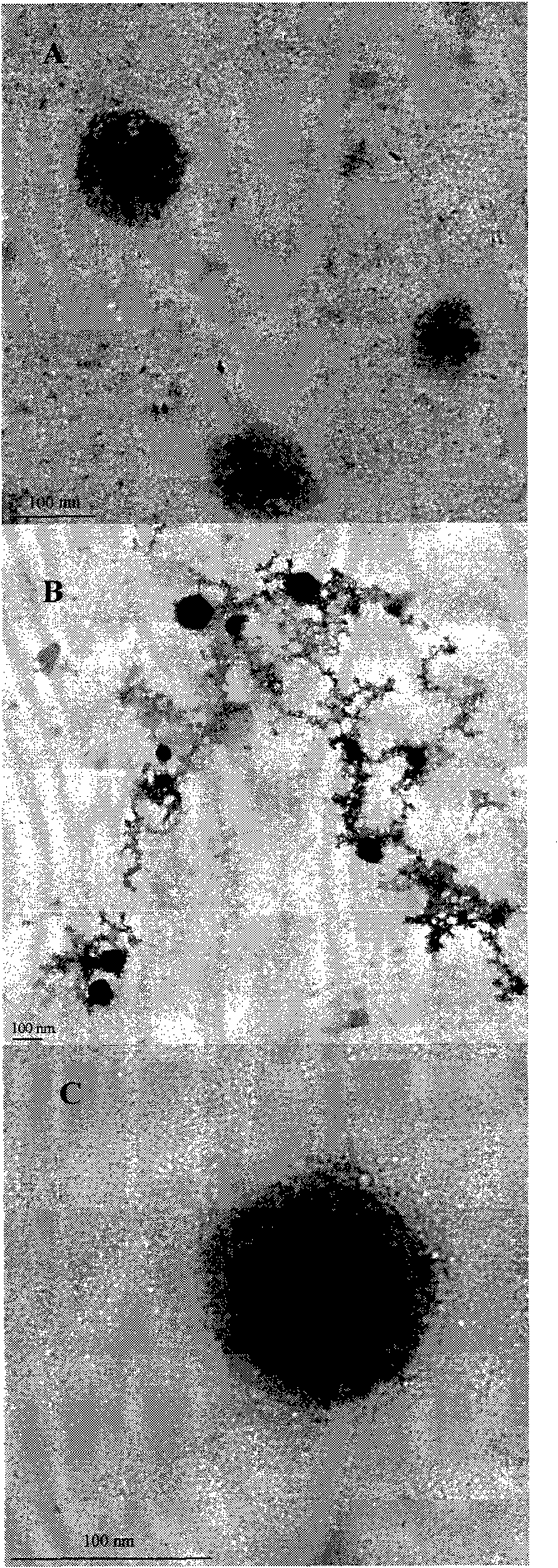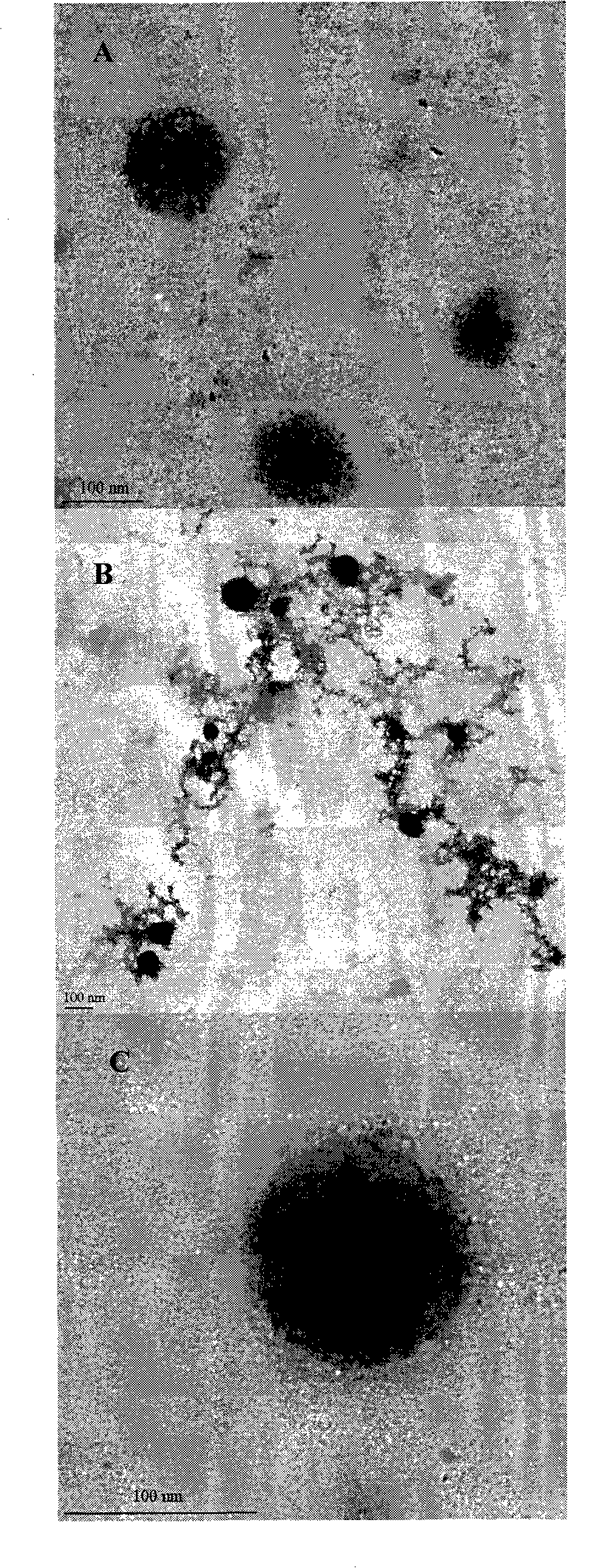Novel chitosan nanoparticles and preparation method thereof
A technology of nanoparticles and chitosan, applied in food preparation, food science, application and other directions, can solve the problem of chitosan nanoparticles intolerance to strong acid, etc., and achieve the effect of mild and strong stability of encapsulation and protection
- Summary
- Abstract
- Description
- Claims
- Application Information
AI Technical Summary
Problems solved by technology
Method used
Image
Examples
Embodiment Construction
[0007] 1. Weigh 50g of casein, add 500mL of 0.05M NaOH solution, stir continuously with a magnetic stirrer, and adjust the pH to 8.0 after it is fully dissolved. Weigh 0.25 g of trypsin and dissolve it in 0.75 mL of deionized water. Add the trypsin solution into the casein-sodium hydroxide solution, mix well, place in a 50°C water bath for constant temperature reaction, and constantly adjust the pH of the hydrolyzate with 1M NaOH solution to keep the pH of the hydrolyzate at 8.0. When the pH of the hydrolyzate was adjusted back to 8.0 for the last time and remained unchanged for more than half an hour, the reaction was considered to be over. After the reaction was over, the hydrolyzate was bathed in boiling water for 5 minutes to kill the enzyme. After the temperature of the hydrolyzate returns to room temperature, adjust the pH of the hydrolyzate to 4.6 with 1M HCl, centrifuge at 2000r / min for 30min, and take the supernatant, which is the CPP crude extraction product. Adjus...
PUM
| Property | Measurement | Unit |
|---|---|---|
| particle diameter | aaaaa | aaaaa |
Abstract
Description
Claims
Application Information
 Login to View More
Login to View More - R&D
- Intellectual Property
- Life Sciences
- Materials
- Tech Scout
- Unparalleled Data Quality
- Higher Quality Content
- 60% Fewer Hallucinations
Browse by: Latest US Patents, China's latest patents, Technical Efficacy Thesaurus, Application Domain, Technology Topic, Popular Technical Reports.
© 2025 PatSnap. All rights reserved.Legal|Privacy policy|Modern Slavery Act Transparency Statement|Sitemap|About US| Contact US: help@patsnap.com


